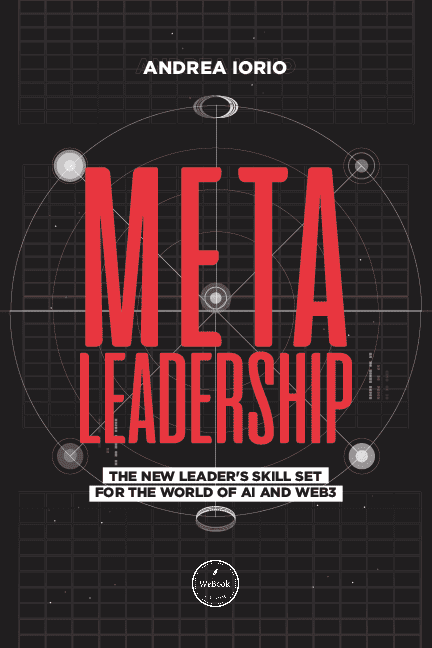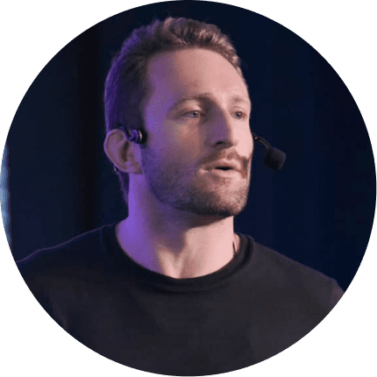Put yourself in the following situation: you are a store manager and you need to give very important feedback to a newly hired salesperson. You put a lot of expectations on her, but after the first 3 months of work, she's still not performing well. You have the chance to choose one of 3 feedback approaches:
1) You are very direct and transparent with her, making it clear the risk of what can happen if she doesn't change…even making it clear that she can be fired. After all, honesty and sense of urgency are the best, isn't it right?
2) You give a full feedback to her, by highlighting a positive point of the situation, passing the harshest feedback, and closing it with another positive point.
3) You rescue the memory of yourself when starting a job in the past, and openly share with her that you experienced the same thing in the past in order to better understand what could be some of the reasons for these low performance. So you open up the conversation with her and let her talk before giving an assertive feedback from what you've heard.
You see, there's no right or wrong answer here. I believe option 3 is right one to go, because only the third format is an empathic feedback because you demonstrate that you have lived through the same situation that the person did. This prepares her to be more open to your feedback as much as identifying elements in her story, while also allowing you to better put yourself in her shoes. We'll explore that in our article today!
We are going to analyze a statement made by Satya Nadella, former Microsoft CEO and author of the book Hit Refresh (which I highly recommend!). One of the interesting things about Satya is that even though he is a great connoisseur of cutting-edge technology, he is also a great connoisseur of the human side, as life has taught him some lessons about the importance of humanization in life and in business. Empathy in particular, is a topic that Satya Nadella addresses in this next sentence.
"We were our parents' only children, so we got married in our early twenties, and we were expecting our first child, we were extremely happy. My wife is an architect, so our concerns were something like 'When will I get back to the office?", thinking about who would take care of your child during the day, and so on. But one night they had some complications, and our son Zain was born, and because of these complications, he was diagnosed with brain paralysis. He's a quadriplegic and he's stuck. And I'd say that for the first 5 years or so, I had a really hard time dealing with this. Because I felt like all those plans that I had made for myself, of how our life, would go down the drain. And then I saw my wife go back and forth in Seattle, taking him to every therapy she could, and I was looking at it all while still grieving, brooding over my own problems. But then I realized that nothing had really happened to me, but something had happened to my son, and I as a father needed to take responsibility and do my duty. In other words, it's the tough but important need to learn how to see the world through my son's eyes. Is it not? That's what empathy is all about, after all. And I think that's what it is after all: it's innate, in our soul, it makes us human, and I think empathy is something that we all have the ability to exercise. Life teaches us that."
When Satya Nadella was interviewed for his first job at Microsoft Corp. in the 1990s, he was standing in front of a huge whiteboard, drawing streams of algorithms, one after another, going through complex formulas and demonstrating using minimal computational power, showing his computer science acuity. It was an arduous interview, but technically he was doing really well.
When writing the last line of te code that he thought: “Oh my God, I'm done. Isn't it time to finally get hired? ", but it wasn't like that.
Nadella had one more question to answer before the job interview ended. It was a question that took him by surprise. The question was "If you're at an intersection and you see a baby fall, what will you do?"
He was initially unsure how to respond: it was 1992, so it was before smartphones even existed, and after thinking about it for a long time, he replied that he would run to the nearest pay phone and call 911.
The interviewer initially said nothing but stood up, thanked Nadella and said the interview was over and walked him to the door. Nadella was stunned.
Then he asked the interviewer 'What happened?' And he said, 'You have to develop empathy, because when a child is crying, you pick him up and hug him.' No further.
Well, today we know that this answer didn't interfere in the hiring of Satya, so good were his technical skills. Today he is CEO of the software giant based in Redmond, Washington. He became CEO in February 2014, the third CEO in Microsoft's 43-year history, succeeding Steve Ballmer and Bill Gates.
The truth is that life taught Satya Nadella what empathy means, and its importance for innovation and leadership, as we learned with the story about his son. On the innovation side, Nadella believes that innovation is not just about challenging the status quo - it's about listening to your customers and understanding their needs. Innovation is the natural result of having the interests of the people you serve in mind, and Nadella makes that clear when he says that empathy makes you a better innovator, because if you look at the most successful products that Microsoft has created, you'll find it comes with the ability to address the unmet and unarticulated needs of customers. That is, through empathy.
You see: the experience of having a child with special needs, Zain, made Satya and Microsoft innovate a lot in the area of accessibility, through empathy. He claims that artificial intelligence (AI) has great potential in this area. “More than anything else, AI completely changes the game in terms of accessibility.”
One particular innovation is known as Seeing AI, a free iOS app released in 2018 that uses a phone's camera to recognize objects (including printed text and handwriting) and describe them to visually impaired users. This reminds me a little of Hand talk, Ronaldo Tenório's Brazilian app, which is basically a virtual translator that automatically translates written and spoken content into Sign Language on different platforms. Ronaldo was even chosen by MIT as one of the 35 most innovative young people in the world – the only Brazilian on the list. Now think about it: do you think these innovations would be really possible without empathy? I can also say that the suicide prevention app Ajuda Já, (which I launched voluntarily with friends Alessandro Telles and Renato Alves), would not have been possible without a huge dose of empathy that allowed us to relive the step by step that people contemplating suicide take it into their head. The app was so successful that we went to the Fatima Bernardes talk show to talk about it, and to this day we receive messages from people thanking us for the app, and let's face it, there's no better feeling.
Keep in mind that this does not only apply to social projects, but to all types of business, as well as this correlation between empathy and innovation is not just a guess of one of the greatest CEOs in the world, but it is widely proven: the Global Empathy Index was an initiative led by Lady Geek founder, Belinda Parmar, that draws on data to validate the importance of empathy in business. Until 2016 they had an annual index, which however after 2016 seems to have been discontinued. Companies are ranked in terms of empathy by measuring tangible indicators. The level of empathy was divided into 5 categories: ethics, leadership, company culture, brand awareness and public messages through social media. All of this is publicly measured, analyzing tweets, financial results, and reviews on Glassdoor as well. And the results show a “direct link between empathy and business success”: the top 10 companies in the Global Empathy Index 2015 increased in value by more than double the bottom 10, and generated 50% more profits (defined by market capitalization ). A correlation of up to 80% was also found between the departments with the highest empathy and those with the highest performance.
The 2015 top 3 had Microsoft at the top, Facebook second and Tesla third. I believe that Facebook is no longer at the top as it used to be, if a new index were to be measured today for example, but anyway…times change.
Let's go back for a moment to the fact that empathy is the key factor to identify the customer's wants and needs, even though he doesn't know how to express them. Did you realize that my main point in this discussion is that empathy is what differentiates innovation from invention? In general terms, we can say that invention is the emergence of a prototype, a new device or a new practice, process or business model. Innovation is the business of turning a new prototype into something practical, affordable, and reliable that people will want to use and buy. Fundamentally, innovation is the process of lowering the price, it's the process of increasing the reliability and efficiency of the prototype, and it's the process of persuading others to adopt it too. In other words, innovation is taking an invention and turning it into something that solves someone's pain. Because invention may well be something that no one needs and it's just a failed prototype that gathers dust in the corner of the inventor's garage. If it doesn't solve anyone's pain, why should anyone buy or use it? We see many examples of these failures every day, on supermarket shelves, in apps that we download and never use again, and so on.
But what is empathy, and how do its elements impact innovation? Let's start by remembering that empathy is one of the pillars of Emotional Intelligence, and the definition of empathy that I most likely prefer is the one given by Thereza Weisemann, a researcher who studied the impact of empathy in several professions where empathy is important, and whose definition is always rescued by Brené Brown in her TED Talks. Basically, it comes down to 4 main points:
- Perspective Taking: it is the ability to take another person's perspective, or to recognize their perspective as their truth. You see, how can we identify unfulfilled customer pains if we don't put ourselves in the other's shoes and take their perspective as a starting point? We would fall into the big mistake we make most of the time, that is, to develop new products, services or features, because we think they are important to…ourselves! In addition to being extremely selfish and showing little empathy, we run the risk of failing because we are not representative of the majority of our customers. You see, if I had just thought with my head and not taken perspective, I would have certainly failed the time I was leading at Tinder as I would never have understood the diversity and complexity of relationships in Brazil.
- Avoiding judgments: this is tempting, after taking the other's perspective, isn't it? I'll give you a practical example: maybe your client wants something simpler in their ecommerce application, while you have the most complete and sophisticated app on the market in mind. Once you understand this, if you are stubborn, you will think: "I'm right, my client is wrong: I'll do it anyway because I'll convince him that my point of view is better". Needless to say, this leads to failure.
- Recognizing emotions in others: this is essential because just seeing things from the other's perspective is not enough, but you need to recognize what sensations and feelings the person experiences in being in that situation, or when using a certain product and service. The best way to recognize emotions in others is through self-knowledge, as you will only recognize emotions in your client if you have already experienced similar emotions in similar contexts.
- Finally, communicate the fact that you have recognized the other person's emotions: that is, we have to demonstrate that we have listened to the customer by putting the innovation into practice. It couldn't be more frustrating than our company proclaiming itself to be empathetic, innovative and customer focused, constantly collecting data and information from the customer, but without later acting on it by recognizing their needs and pains. I get pretty upset when, after filling out a gigantic form about my customer profile on a new ecommerce site, the first email marketing I get are suggestions for children's gifts, which has nothing to do with me or my life.
Before we wrap up we need to clarify something: the most common way companies think they are practicing empathy, - going to the customer and asking them what they want, just doesn't work. Do you know why? Because they just don't know what they want. It is known that Henry Ford once said that if he had asked his clients at the time what they wanted, they would have answered a faster horse, not a car.
In other words, it is up to us, innovators, to identify customer pains without them even knowing how to express them.
This is possible only through empathy.
Here's one last example: children's toothbrush. You would think a child's toothbrush should be thinner than one designed for an adult, as children's hands are smaller, so you reduce the proportions. Simple right? It has been that way since the beginning of the toothbrush industry, until today. But for all this time the industry has not paid attention to something: children usually hold the toothbrush in a different way. They clench their fists rather than mostly using their fingers (which is how adults tend to do), and for that it's actually better to have a wider, softer handle. Carefully observing what children actually did with their toothbrushes, Oral-B came with the "squishy grip", a large, fluffy handle that makes it easier for the child to control it and allows for better teeth cleaning. It took a long time to better understand children's needs regarding toothbrushes for one basic reason: the people who design the oral care implements are not children. Only by using empathy, Oral B was able to innovate and transform the industry, while improving the experience of millions of children.
Finally, I want to offer you a practical challenge: think about the main persona of your business, your main customer. If you're from an internal area and not sales or marketing, you can think about your internal customer. And ask yourself the following questions, to try to understand empathically who he is and how he thinks. Note that these are some questions that the writer Marguerite Yourcenar asked herself when writing the incredible book Memoirs of Hadrian, Roman Emperor, in which she empathically placed herself to write her novel. The questions I want you to ponder are:
- What does my body look like?
- How much money do I have?
- What am I afraid of?
- What is my life expectancy?
- How do I feel about death?
- How will I be judged: a success or a failure?
- What is expected of me?
- What turns me on?
- What makes me angry?
- If I wake up at 3 am, what thoughts go through my head?
- How do I feel about my own appearance?
- What do I miss?
Think about it as homework, and tell me later.
Keywords Soft Skills: Satya Nadella, Microsoft, Bill Gates, Global Empathy, Belinda Parmar, Lady Geek, Tesla, Facebook, Leadership, What are Soft Skills in Business, Example of Technical Skill, Technical Skill Examples, Soft Skill Development, Soft Skills for a Job, Business Soft Skills, Soft and Hard Skills, Why Are Soft Skills Important, Necessary Soft Skills, Necessary Soft Skills, Human Skills, Entrepreneurship, Andrea Iorio, Metanoia Lab, Metanoia Club, Meta Leadership, Podcast, Inevitable, KPIS, KPI, Company, Business,









